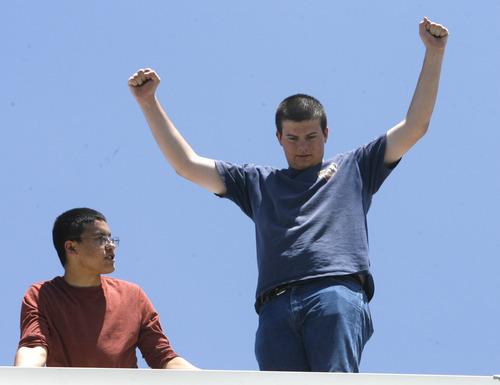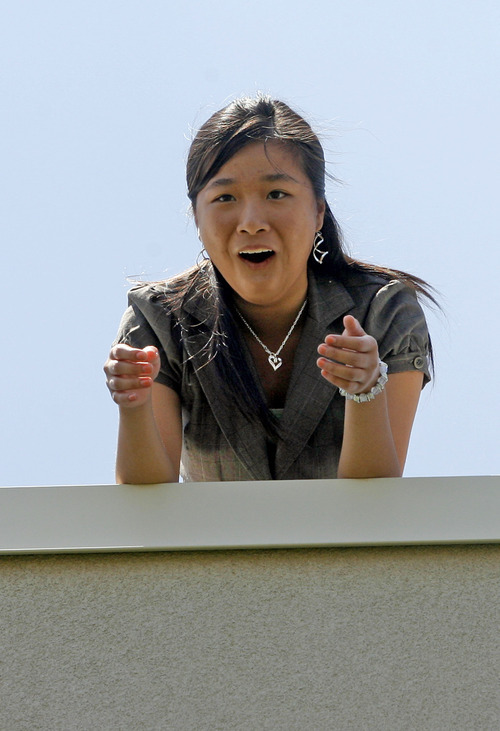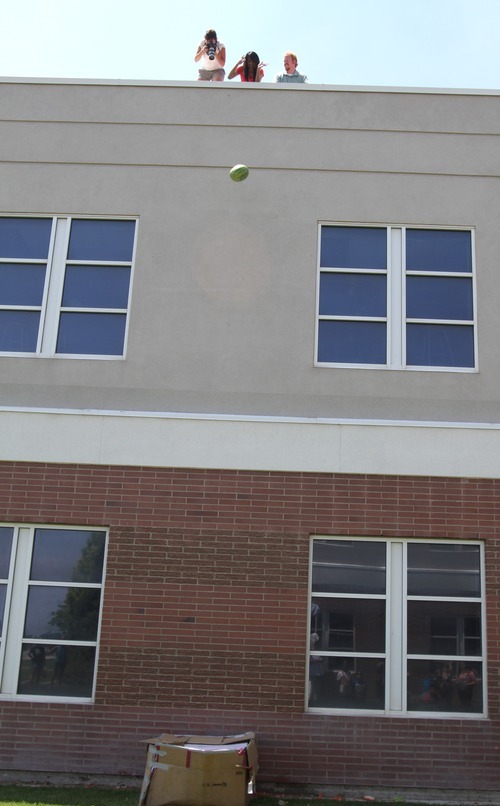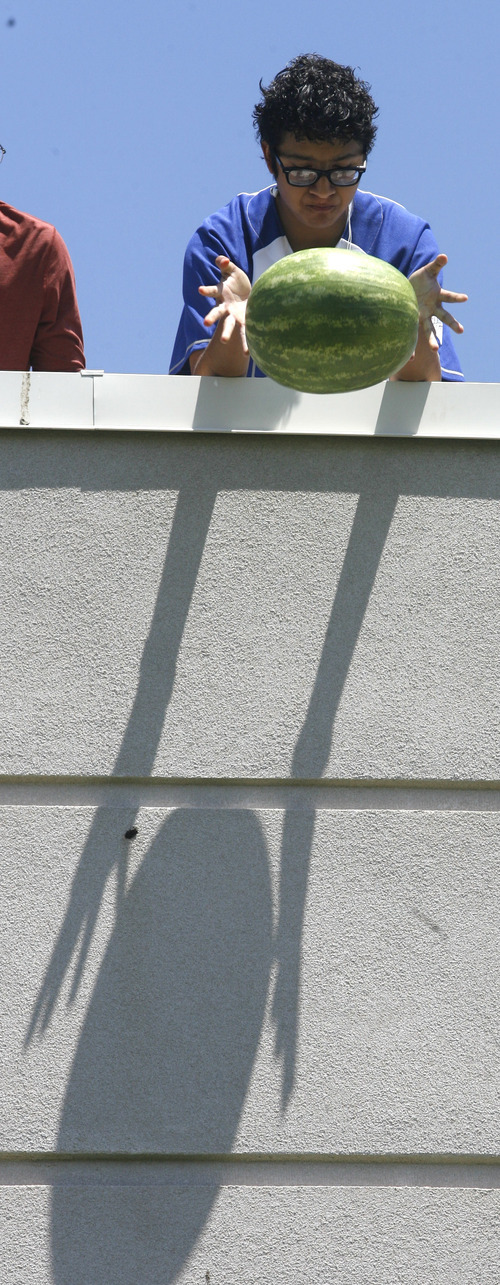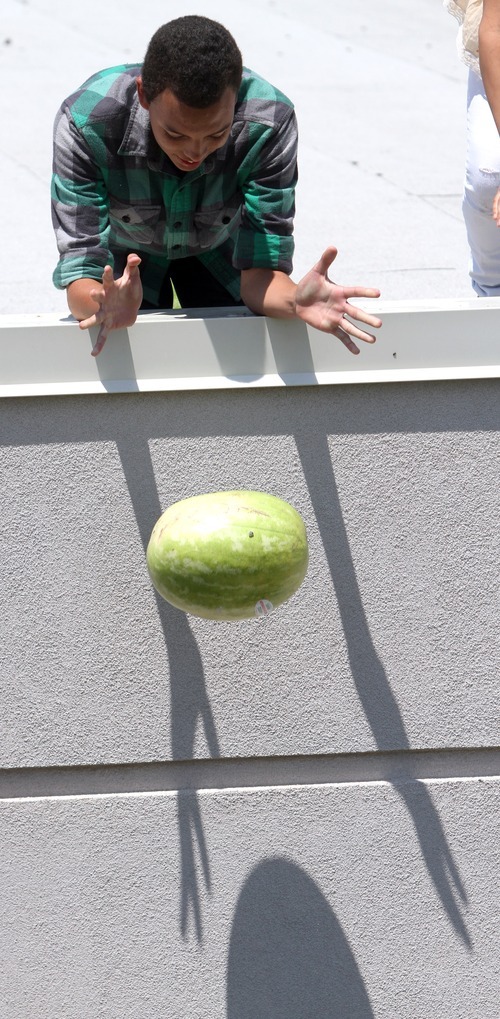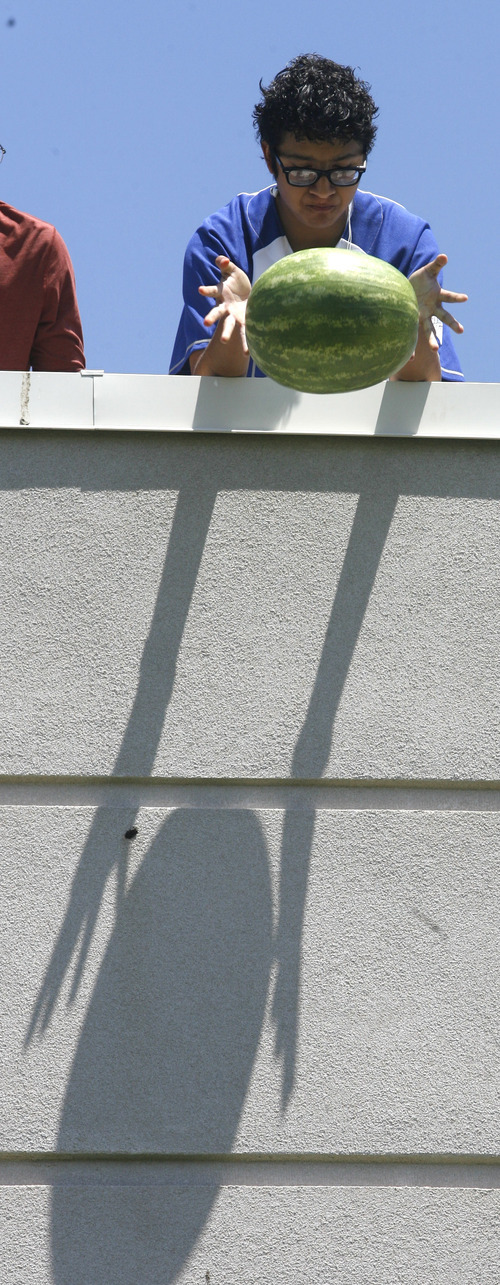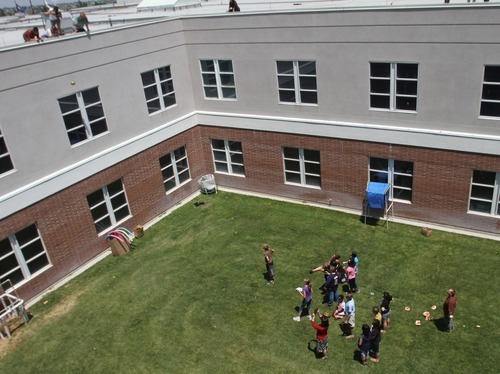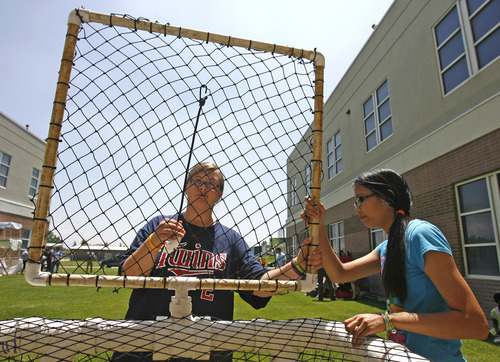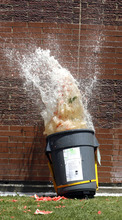This is an archived article that was published on sltrib.com in 2012, and information in the article may be outdated. It is provided only for personal research purposes and may not be reprinted.
West Jordan • So, does dropping watermelons off a second-story roof onto a contraption inspired by an Indiana Jones movie qualify as a great school project, or the greatest school project ever?
For Bingham seniors Michael Tyler and David Vance, it's likely the latter.
The students designed and built the "Temple of Doom"-inspired fruit-catching apparatus and saved their melon.
They were among 30 students who participated in the physics experiment as part of the Utah Science Technology and Research (USTAR) Physics class they are taking at Copper Hills High this summer.
"We kind of got our idea from Indiana Jones," Vance said of his team's creation, which included three horizontal bed sheets to cushion the fall. "The first sheet stopped the watermelon for loss of force, the second took more force off and the third acted as a ramp to roll the watermelon away."
The USTAR grant provides accelerated opportunities in math and science. The Copper Hills physics class, taught by Steve Manwaring and Matt Lund, is one of four summer core science classes offered by the Jordan School District.
Also available to students were biology and chemistry courses, all designed to allow them to gain course credits in the summer, instead of having to fit the courses into what for most are already overflowing schedules.
"I wanted to take physics next year, but I didn't have time in my schedule for it," said Copper Hills senior Cindy Giang. "I asked about it last year, and it wasn't available. When I found out about it this year, I took it."
The watermelon drop, which took place earlier this month from the roof of the school, was designed to teach students about gravity's acceleration rate.
"It was trying to prove that no matter the size of the watermelon you drop, the rate of acceleration is always going to be about 10 meters per second," Tyler said.
Said Vance: "You can learn a lot of things from this, especially when it comes to building things. If you are building a treehouse, you learn about building supports."
Lund, who has conducted similar experiments in the fall, when students drop pumpkins instead of melons, estimated 70 percent of the melons made the 30-foot drop unharmed — at least on the first attempt.
Riverton sophomore Shaylyn Knappenberger's melon survived the fall, landing safely on her device, which featured a net "basket" hanging under a hollowed-out tabletop. Other devices were constructed of PVC pipe, trash bags, bubble wrap — anything to break the fall without breaking the husk.
The melon drop was one of several experiments in which the student participate during the five-week course, which concludestoday. Students attend eight hours a day, Monday through Thursday, and Lund and Manwaring pack a year's worth of physics into the class.
The summer course actually allows students more than 20 hours of extra class time than if they had taken it during the school year.
"I like it a lot better in the summer because we have more time and we can get more hands-on with stuff," Vance said. "It's not like we're rushed to do everything in an hour and a half. And since everyone here is taking the class to get above the curve, no one is sitting here like they don't want to be here. They will actually take the time to figure stuff out." —
Flying Fruit
Students in the Utah Science Technology and Research (USTAR) physics class dropped watermelons onto catching devices they built during an experiment earlier this month.
The 30 students attend class 32 hours a week for five weeks and get the equivalent of a full year of physics credit.
The class is one of four science courses offered this summer by the Jordan School District.



